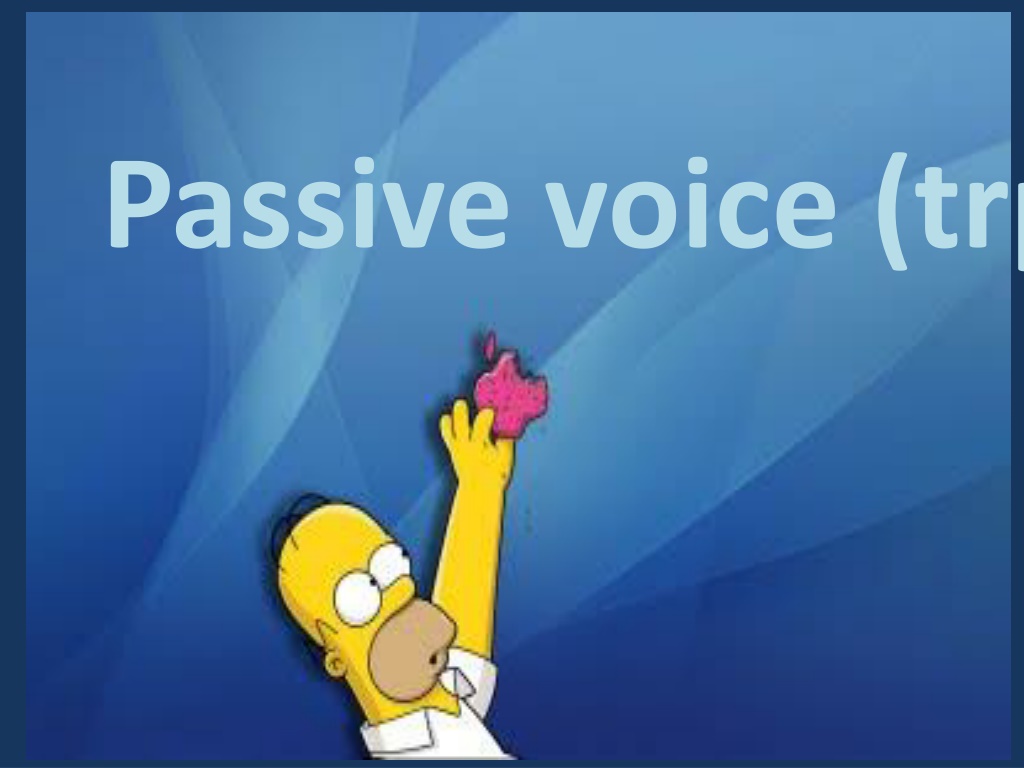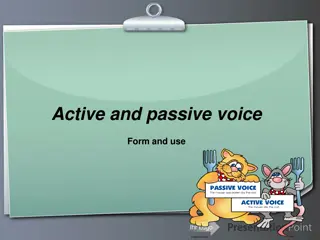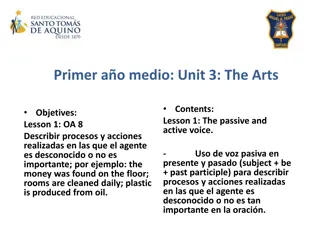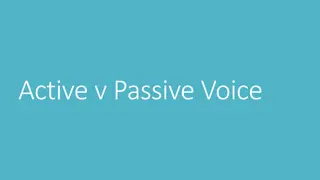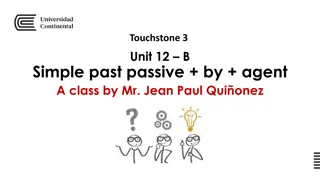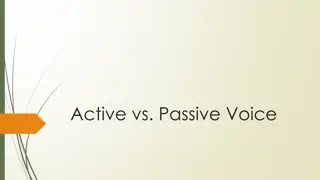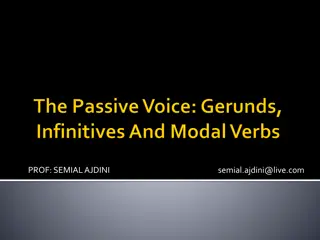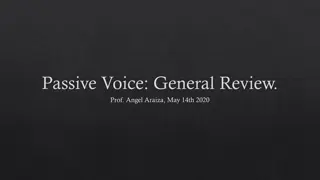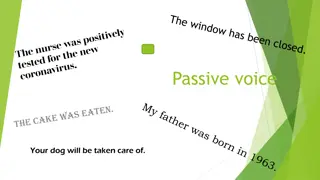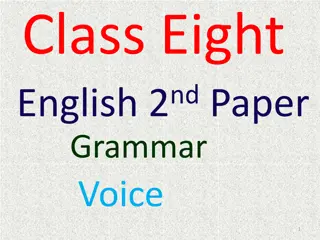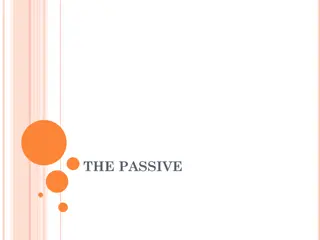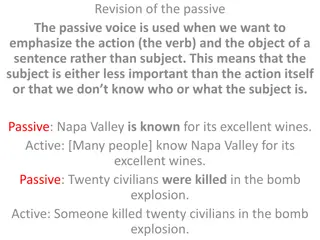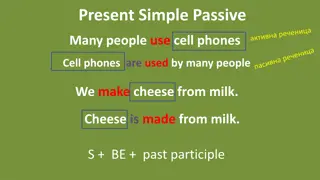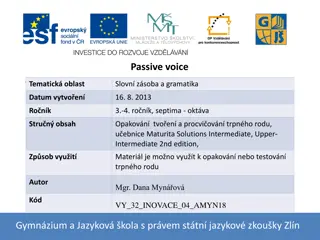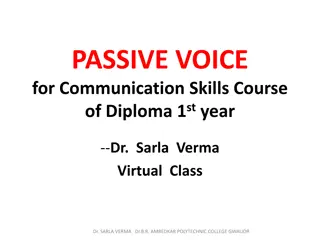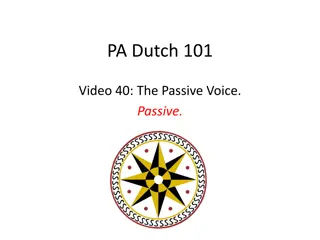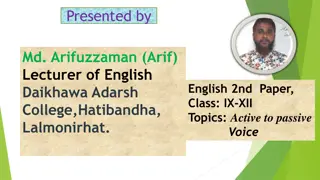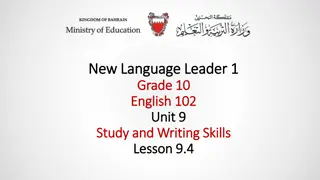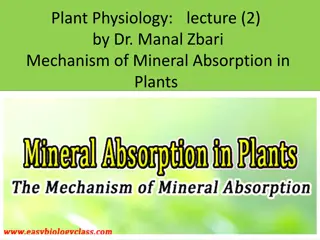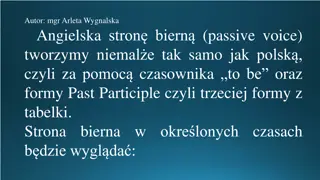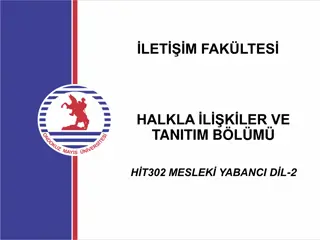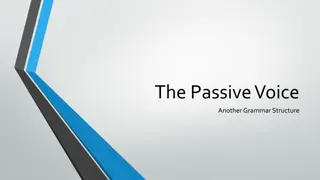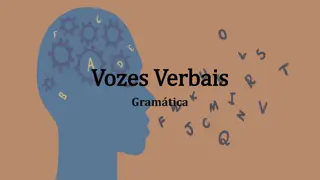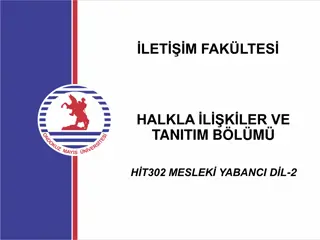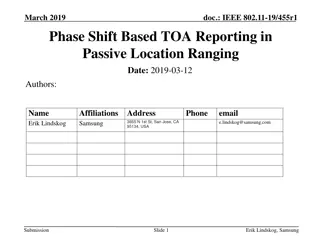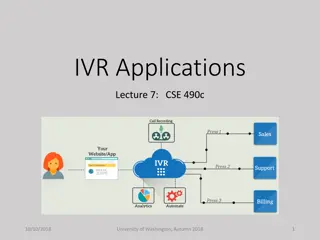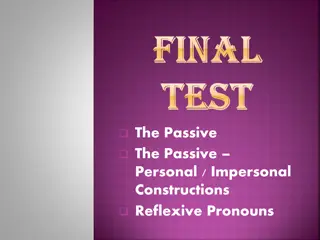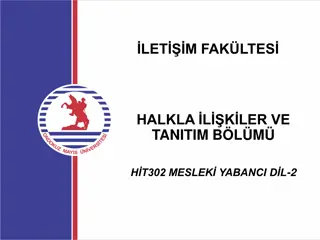Understanding Active and Passive Voice in English Grammar
Learn about active and passive voice in English grammar with examples and practice exercises. Understand the difference between active and passive voice, how to form sentences in both voices, and practice converting sentences from active to passive voice. Improve your language skills with this comprehensive guide.
Download Presentation

Please find below an Image/Link to download the presentation.
The content on the website is provided AS IS for your information and personal use only. It may not be sold, licensed, or shared on other websites without obtaining consent from the author. Download presentation by click this link. If you encounter any issues during the download, it is possible that the publisher has removed the file from their server.
E N D
Presentation Transcript
Active voice (tvornik) Ko osebek nekaj dela, uporabimo tvornik (ACTIVE) Glagol v tvorniku (lahko v razli nih asih) osebek (vr ilec -doer) E.g.: People sell good luck flowers. Predmet ( prejemnik - receiver)
Passive voice (trpnik) Uporablja se, ko je dejanje pomembnej e od vr ilca (kdo/kaj je to naredil). Vr ilec dejanja je na mestu predmeta, pred njim stoji by. Lahko ga tudi izpustimo. Glagol v trpniku (lahko je v razl. asih) osebek ( receiver) Predmet (Doer) E.g.: Good luck flowers are sold by people.
Oblika: Osebek + glagol biti v ustreznem asu + Past Participle/-ed (3. oblika)
Tvornik (Active) in trpnik (Passive) as osebek glagol predmet Present Simple Active: Rita writes a letter. Passive: A letter is written by Rita. Past Simple Active: Rita wrote a letter. Passive: A letter was written by Rita. Present Perfect Active: Rita has written a letter. Passive: A letter has been written by Rita. Future Simple Active: Rita will write a letter. Passive: A letter will be written by Rita. Modalni glagoli Active: Rita can write a letter. Passive: A letter can be written by Rita.
Practice People eat moon cakes at Mid-Autumn Festival. Moon cakes are eaten (by people) at Mid-Autumn festival
People swept graves with brooms at Ching Ming Festival. Graves were swept with brooms (by people) at Ching Ming Festival.
People will light lanterns at Mid-Autumn Festivals. Lanterns will be lit (by people) at Mid- Autumn Festivals.
People swept graves. Graves __________________. were swept Are swept Is swept Were swept Sweep
People will buy some flowers. Some flowers ______________. will be bought Will be bought Is bought Are bought Buyed
Miss Lee paints a picture. A picture ___________ by Miss Lee. is painted Are Painted painted Paint Is painted
The brother made a cake. A cake ___________ by the brother. was made maked Is made was made Is make
John buys some new clothes. Some new clothes _________ by John are bought Is bought bought Are bought Be bought
The family clean the house. The house __________________. Is cleaned by the family Is cleaned by the family Are cleaned by the family Cleaned by the family Clean by the family
Mr. Chan places some flowers Some flowers __________________. are placed by Mr. Chan Placed by Mr. Chan Is Placed by Mr. Chan Are placed by Mr. Chan Are place by Mr. Chan
Sally throws the old things. The old things ___________________. are thrown by Sally Are threw by Sally Is thrown by Sally Thrown by Sally Are Thrown by Sally
Peter draws a car ___________________________. A car is drawn by Peter A car is drew by Peter A car is drawn by Peter Peter is drawn by a car Peter is drew by a car
Mr. and Mrs. Wu bake a cake ___________________________. A cake is baked by Mr. and Mrs. Wu A cake are baked by Mr. and Mrs. Wu A cake baked by Mr. and Mrs. Wu A cake is baked by Mr. and Mrs. Wu A cake bake by Mr. and Mrs. Wu.
